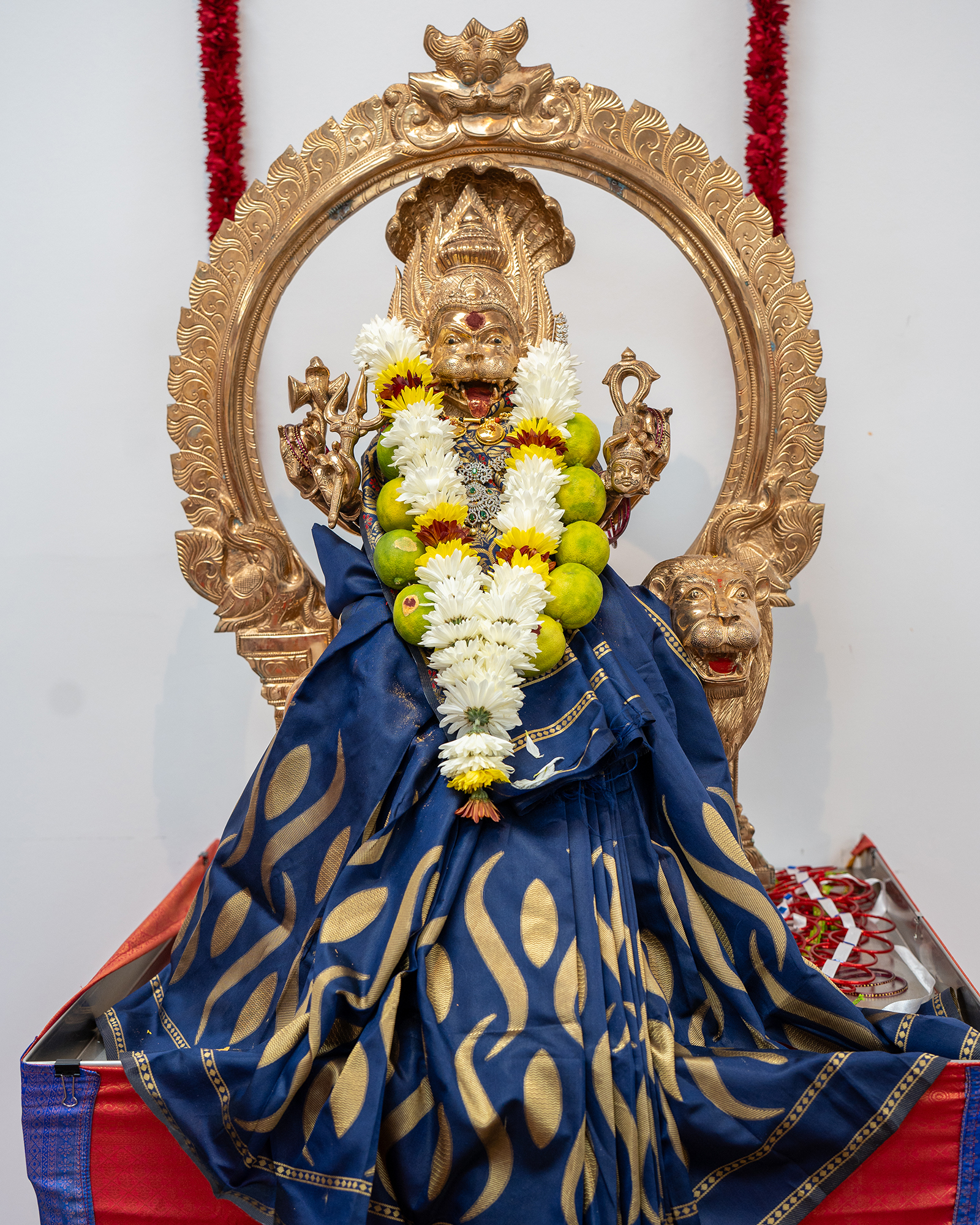
Sri Pratyangira Devi

Birth Thithi:
Vaisakha Shukla Chaturdashi (May-June Waxing Phase 14th day)
Origin Details:
Pratyangira Jayanti is believed to be the day when Goddess Pratyangira, a ferocious aspect of Goddess Shakti appeared on Earth.It is observed on the fourteenth day(Chaturdashi) of the Shukla Paksha or waxing phase of moon in the month of Vaishakha (Gregorian equivalent: May-June).
Per Devi Mahatmyam she is considered to be one of the Sapta Matrukas. According to many Puranas, at the end of the Krita Yuga, a glittering spark appeared from the universe and transformed into a wicked demon named Vipulasura. Vipulasura disturbed a group of eight sages who were performing rituals of Ashta Lakshmi. This angered the goddess who transformed a holy lotus flower into a kavacha or a strong shield. It is also mentioned that the lotus that was transformed had 562 petals in it. The shield provided a great protection to the eight sages, allowing them to perform the holy rituals without any disturbance. Following this, Devi took the form of Narasimhi and defeated the demon Vipulasura.
According to the Markandeya Purana and Shiva Purana, in the beginning of the Treta Yuga, Narasimha, the fourth among the ten avatars of Vishnu, killed the unruly asura king Hiranyakashipu by ripping his body to shreds. Narasimha grew furious and unstoppable due to the evil contained in Hiranyakashipu’s body. While the original story ended with Prahlada pacifying him and convincing him to return to Vaikuntha, in the Shaiva tradition, Shiva assumed the form of Sharabha, a bird-man hybrid. Sharabha tried to carry Narasimha in his talons, but Narasimha in turn assumed the form of Gandabherunda and engulfed Sharbha. Upon the prayers of Shiva, Mahadevi took the form of Pratyangira and emerged from the head of Sharbha, pacifying Narasimha and taking her place as his consort, Narasimhi.
Devata Significance:
The term ‘Prati’ means reverse and ‘Angiras’ means attacking. Thus, the goddess Pratyangira is the one who reverses any black magic attacks. In the temples of South India, She is also eulogized as Atharvana Bhadrakali as she is considered the embodiment of the Atharva Veda. In another version, it is mentioned that in ancient times, when two Rishis, Prathiyangira and Angiras were meditating, they re-discovered a Goddess through a Moola Mantra who was nameless. Later, she prized the rishis by naming herself after them, henceforth called Pratyangira Devi.
Tantra classifies deities as Shanta (calm), Ugra (wrathful), Prachanda (horrifying), Ghora (terrifying) and Teevra (ferocious). Pratyangira is considered as a teevra murti.
Special Days for Pooja:
- Vaishakka Shukla Chaturdashi (May-June Waxing Phase 8th day)
- Krishna paksha Ashtami & Amavasya (Waning phase 8th day & No moon day)
- Rahu-kalam (Rahu period) during Tuesday, Fridays & Sundays
Key benefits Worshiping:
- Worshiping her removes bad effects in life
- She protects from both known & unknown evil forces.
- Her pooja neutralizes one’s internal & external enemies.
- She bestows all right wishes of her devotees including Moksha.s.
Pratyangira Dhyanam:
Khadgam kapalam damarum trishulam,
sambibhrati chandrakalavatansa.
pingodharva kesho ashit- bheem danshtra,
bhuyad vibhutyai mam bhadrakali
Translation:
The goddess Bhadrakali, who has sword, Kapala, damaru and Trishula in her hands, whose forehead is adorned with half moon, whose hair are yellow and in standing position, and whose teeth are yellow colored and seem very dreadful, that goddess may do my welfare.